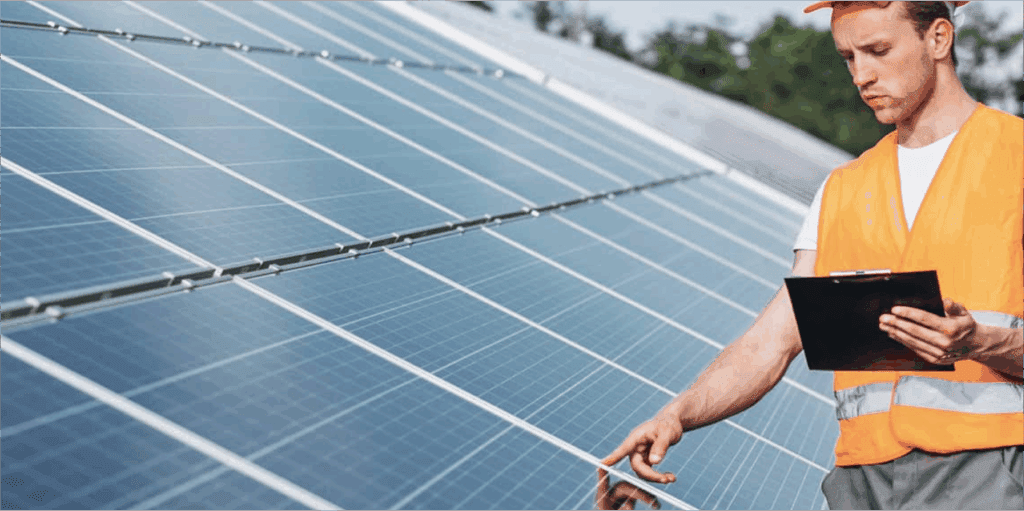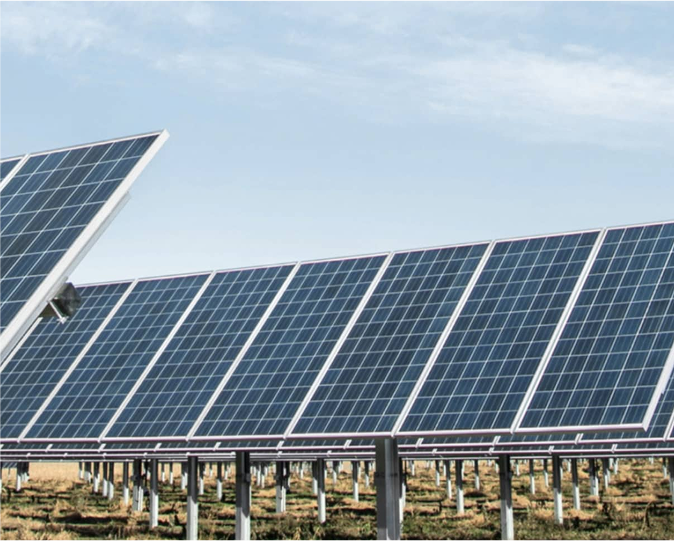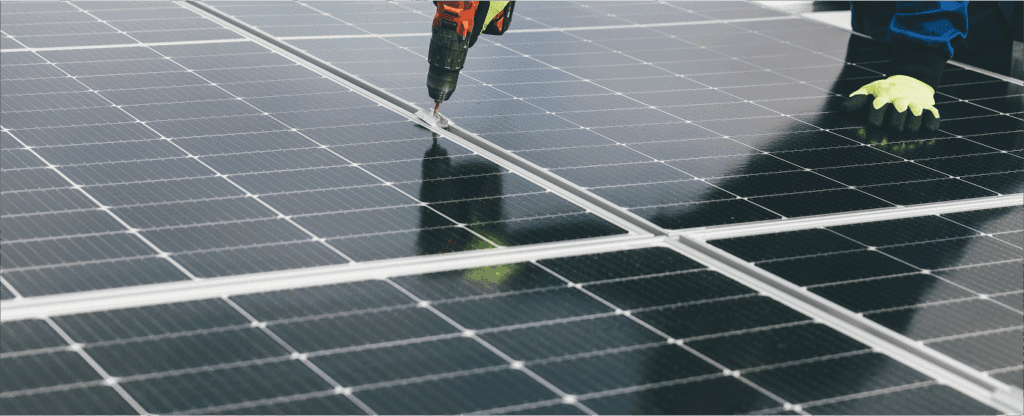Everything you need to know before going solar.
Thinking about switching to solar but not sure how it all works? This beginner’s guide will help you understand the basics of solar energy, how panels generate electricity, and how it all comes together to power your home or business.

What Are Solar Panels?
Solar panels are devices made up of photovoltaic (PV) cells that convert sunlight into electricity. When sunlight hits these cells, it creates an electric current that can be used to power lights, appliances, and more.
How Does a Solar System Work?
A typical solar system includes:
- Solar Panels: Capture sunlight and convert it into DC electricity
- Inverter: Converts DC into usable AC electricity
- Mounting Structure: Keeps the panels stable on your roof
- Meter & Monitoring System: Tracks how much energy you generate and use
Optional systems may include batteries for backup and net meters to send excess power back to the grid

What Are Solar Panels Made Of?
Solar panels are made up of photovoltaic (PV) cells, usually made from silicon. These cells are the building blocks that convert sunlight into electricity. Multiple cells are grouped together to form a solar module, and several modules combine to make a solar array — the full setup you see on rooftops or fields.
Each cell has two layers — one with a positive charge and the other negative. When sunlight hits the panel, it excites the electrons in the cells and creates an electric current. This process is known as the photovoltaic effect.

How Does a Solar System Work?
A full solar system includes more than just panels. Here’s how it works, step-by-step:
- Solar Panels (PV Modules)
These panels collect sunlight and convert it into direct current (DC) electricity. - Inverter
The inverter changes that DC electricity into alternating current (AC) — which is what your home and appliances use. - Mounting Structure
This holds the panels securely on your roof or the ground and is designed to withstand wind, rain, and other weather. - Solar Cables & Connectors
These safely transfer power between all components and ensure efficiency. - Net Meter (Optional)
In grid-connected systems, a net meter tracks how much electricity you generate, use, and send back to the grid — allowing you to earn credits or reduce your bills. - Battery Storage (Optional)
For hybrid and off-grid setups, batteries store excess electricity for use during nighttime or power cuts
Solar energy isn’t just a trend — it’s a smart, future-ready investment. Whether you’re a homeowner, business owner, or developer, understanding how solar works is the first step toward energy freedom.
At Greencube Energies, we’re here to guide you through every step of the journey. We handle everything — from design and installation to maintenance and support — so you can switch to solar with zero stress.